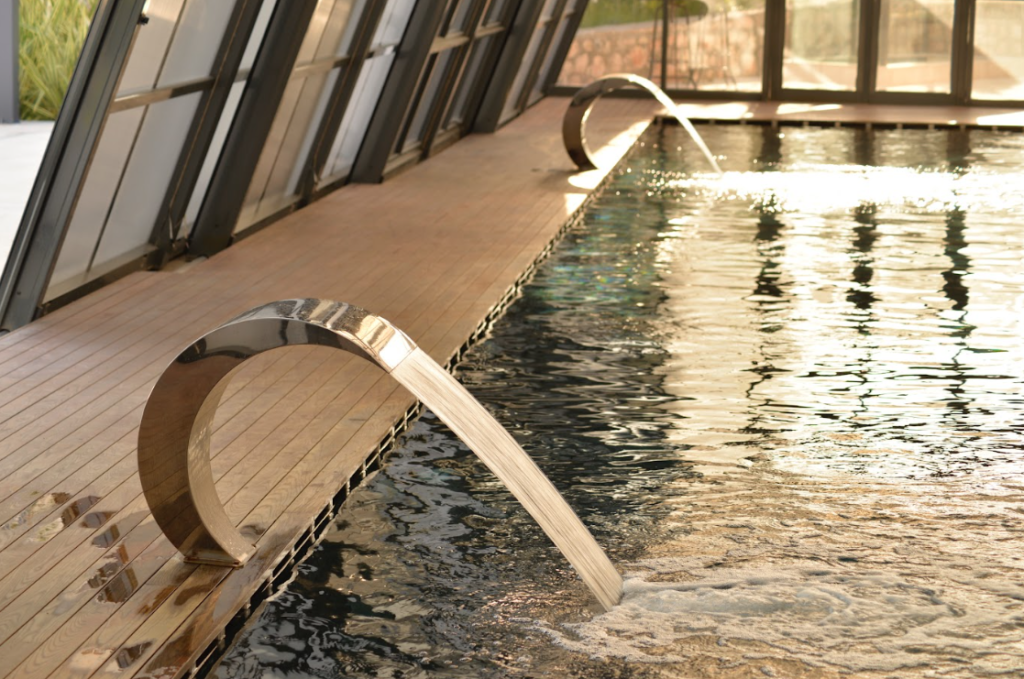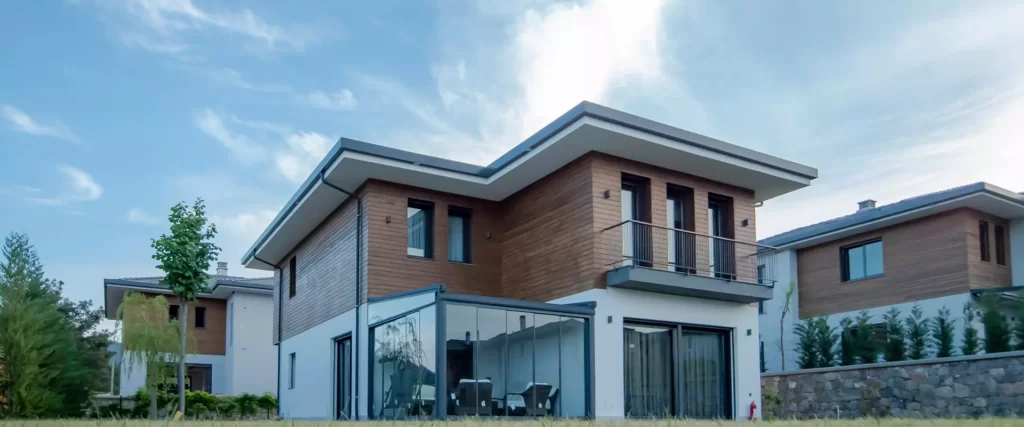Thermally modified wood (TMW) is increasingly recognized for its durability, stability, and eco-friendly appeal. However, when selecting building materials for projects requiring compliance with fire safety regulations, understanding its fire resistance characteristics is paramount.
This article explores the fire performance of TMW, its enhancement with fire retardant treatments, and its suitability for diverse applications, blending technical insights with practical applications.
The Process Behind Thermally Modified Wood
Thermal modification involves heating wood to high temperatures (typically 320°F to 446°F) in a controlled, oxygen-free environment. This chemical-free process alters the wood’s chemical structure, offering distinct advantages:
- Improved Durability: Resistance to decay and insect damage due to reduced cellulose content.
- Dimensional Stability: Decreased water absorption minimizes expansion, contraction, and warping.
- Rich Aesthetic Qualities: The process enhances the wood’s natural color, giving it a uniform appearance.
Thermally modified wood is used in applications ranging from decking and siding to interior paneling, appealing to professionals seeking sustainable and reliable materials.
Fire Resistance of Thermally Modified Wood

Fire safety is a critical consideration in construction, and the fire resistance of TMW has specific characteristics influenced by its production process.
Combustion Behavior
Thermally modified wood demonstrates unique fire performance characteristics compared to untreated wood. Studies have shown that while untreated and moderately treated wood may have comparable burn rates at lower modification temperatures, the burning process in TMW typically ceases more quickly after the flame source is removed. This self-extinguishing property is a key advantage, particularly in scenarios where slowing the spread of fire is important. For higher modification temperatures, combining TMW with fire retardant treatments ensures compliance with stringent fire safety codes, offering a balanced solution for safety-conscious builders.
Weight Loss and Heat Release
The same research on thermally modified spruce and oak shows that TMW has a lower weight loss during combustion than untreated wood. This reduced mass loss translates to slower heat release, contributing to improved fire resistance.
Fire Performance Without Additional Treatment
Thermally modified wood offers improved fire resistance compared to untreated wood due to its reduced moisture content and uniform density. Many TMW products meet baseline fire performance standards, such as achieving classifications under EN 13501 or comparable ratings, depending on the wood species and treatment process.
For projects requiring advanced fire safety compliance, particularly in high-risk or regulated environments, combining TMW with fire retardant treatments can provide additional assurance and broaden its range of applications.
Fire Retardant Treatments for Thermally Modified Wood
- In the United States, thermally modified wood can meet fire safety requirements for Wildland Urban Interface (WUI) zones when treated with advanced fire retardant technologies. Fire-retardant-treated TMW is designed for long-term performance, with treatments that are permanently bonded to the wood, eliminating the need for additional on-site fireproofing. This makes it an excellent choice for projects in fire-prone areas, including exterior siding, decking, and cladding.
- By combining thermally modified wood with fire retardants, builders and architects can achieve compliance with U.S. fire safety standards, such as ASTM E84, while maintaining the material’s natural appeal and environmental benefits. This approach ensures that TMW is not only a sustainable choice but also a practical one for fire-sensitive applications.
Builders in wildfire-prone areas benefit from combining TMW with FRT solutions to meet safety requirements while maintaining an eco-friendly focus.
Comparing Thermally Modified Wood to Other Building Materials
Thermally modified wood stands out when compared to traditional and synthetic materials in terms of sustainability and fire behavior.
Untreated Wood
TMW typically demonstrates better fire resistance than untreated wood due to its reduced water content and uniform density. However, untreated wood may perform better in initial ignition resistance without added fire retardants.
Composite Materials
While composite materials may offer greater inherent fire resistance, they often lack the sustainability and natural aesthetics of TMW, making TMW a compelling choice for eco-conscious projects.
Understanding these comparisons helps builders and architects make informed decisions about material selection.
Applications in Fire-Sensitive Environments

TMW’s combination of beauty, durability, and safety makes it a viable material for use in various environments, particularly with appropriate fire retardant measures.
- Wildfire Zones: Treated TMW can be used for exterior siding, cladding, and decking in fire-prone areas, offering a blend of resilience and aesthetic appeal.
- Commercial Interiors: It is suitable for interior paneling and furnishings in public buildings, where compliance with fire codes is mandatory.
- Residential Construction: TMW enhances safety in homes without compromising on design flexibility.
These applications demonstrate TMW’s versatility across different building scenarios.
Environmental Advantages of Thermally Modified Wood
Thermally modified wood is produced without the use of chemicals, aligning with sustainable construction practices. Its carbon footprint is significantly lower compared to synthetic or pressure-treated alternatives. Key environmental benefits include:
- Use of fast-growing wood species like Pine and Ayous, reducing reliance on old-growth forests.
- Compliance with certifications such as FSC® and PEFC™, ensuring responsible sourcing.
Builders aiming for eco-conscious solutions can integrate TMW into projects without sacrificing safety or durability.
Preserving Fire Resistance Over Time
To maintain fire resistance, proper care and inspection are crucial:
- Regular Cleaning: Removing debris and maintaining clean surfaces prevents the accumulation of flammable materials.
- Reapplication of Treatments: Periodic reapplication of fire retardants ensures continued compliance with fire safety standards.
- Inspection: Routine checks for damage or wear ensure TMW products retain their protective properties.
Implementing these maintenance practices helps sustain the material’s fire-resistant qualities.
Understanding Safety Standards in Context
Thermally modified wood paired with appropriate fire retardant solutions meets key safety benchmarks such as ASTM E84 and UL classifications. By combining these materials with expert installation, builders can create structures that balance sustainability with safety.
Adhering to these standards is essential for regulatory compliance and occupant safety.
Thermal Modification: A Smart Choice for Safer Designs
Thermally modified wood offers a unique blend of fire safety, durability, and sustainability for modern building needs. Discover more about its applications and benefits in thermally modified wood projects and find the ideal material for your next design.

